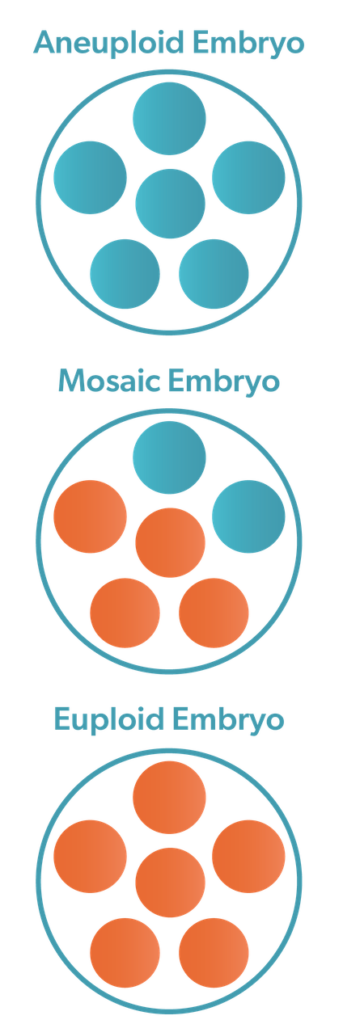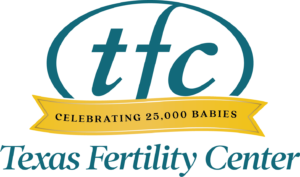
Understanding embryo mosaicism reported by PGT-A
Preimplantation genetic testing for aneuploidy (PGT-A) provides information about the genetic health of your embryos. It can also identify the presence of embryo mosaicism. This information helps you and your fertility specialist select the best embryo for transfer.
Embryos that contain the correct number and order of chromosomes are “euploid.” Euploid embryos are most likely to result in a successful pregnancy. Embryos with extra or missing chromosomes are “aneuploid.” Aneuploid embryos often result in an unsuccessful pregnancy, or they may lead to the birth of a child with a chromosomal abnormality.
In a small number of embryos, PGT-A identifies a third category of results: mosaicism.
What is embryo mosaicism?
 Mosaicism is a condition in which there is a combination of both normal and abnormal cells within the same embryo.
Mosaicism is a condition in which there is a combination of both normal and abnormal cells within the same embryo.
To get an overall idea of an embryo’s chromosomal makeup, PGT-A tests a small sampling of cells from the outermost layer (trophectoderm) of the embryo. It does not touch the inner cell mass, which will become the baby.
When PGT-A results come back, we find that most embryos actually do have some level of mosaicism. Mosaicism doesn’t necessarily mean that an embryo won’t develop normally. However, embryos with high levels of mosaic cells are less likely to result in a successful pregnancy.
How do mosaic embryos form?
Mosaicism occurs naturally. It happens when there is an error in the division of cells in the early stages of embryo development.
Embryonic cells divide extremely rapidly, resulting in the development of a blastocyst just a few days after fertilization. Errors in division that happen further along in embryonic development may result in a lower percentage of mosaicism, while errors that happen when an embryo consists of only a few cells can have a greater impact.
If an error in division occurs very soon after fertilization, the impact on the embryo can be dramatic. If a division error occurs later in embryonic development, most cells in the embryo will be chromosomally normal. However, some abnormal cells may still be mixed in.
The percentage of abnormal cells found will determine whether an embryo is classified as high- or low-level mosaic. High-level mosaic embryos have a large percentage of abnormal cells, making it likely that the embryo is truly abnormal and will have a low chance for normal development. Low-level mosaic embryos contain mostly normal cells, but they still contain enough abnormal cells that their future developmental potential is in jeopardy.


